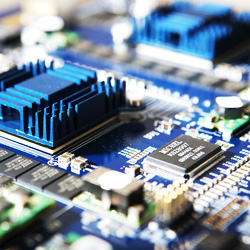The audio world is screaming down the digital highway with no end in sight. Manufacturers are introducing DSP (digital signal processing) products in record numbers, and why not? After all, digital makes everything better, right?
You don’t have to search hard to find DSP in all kinds of audio equipment, including amplifiers, consoles, powered loudspeakers, effects units, system processors and even microphones.
If you wanted really wanted to, you could string together a microphone with built-in DSP, send signal from it to a console with built-in DSP, then send the signal to a system processor (with DSP, of course), output the signal to a power amplifier with built-in DSP, and then send it out to the loudspeaker(s). Or, you could use powered loudspeakers with onboard DSP and skip the dedicated amplifier.
However, is there any point in that? Where should you have DSP in your system and how should you use it? The question may prove to be much simpler than the answer.
First, a point of clarification: when I talk about DSP, I’m referring to a digital processor built into a device. A device that has DSP built into it may or may not have a digital output, and the digital output might be a different protocol from other devices in the signal chain.
In my earlier (and extreme) example, it starts with the microphone with built-in DSP. The microphone capsule converts the analog signal to digital, goes through the DSP, and then a digital-to-analog (D/A) converter provides analog mic level output.
That analog signal then enters the console and hits an analog-to-digital (A/D) converter, then goes through the DSP and then another D/A converter. And then on to the DSP processor where once again we go A/D and D/A, finally into the amplifiers where, yes, you guessed it, once again the signal goes A/D and then D/A. Yikes!
An issue of major concern becomes the quality of the D/A and A/D converters. Just ask any studio guy how important the mic preamp is, and more importantly the A/D converter the preamp uses. At every conversion point there is the potential to as some “suck” to your sound quality.
Imagine the scenario above, we are talking suck x 8! I personally have never seen anyone with a set up like the suck x 8 above. Dave Mcnell has written a good overview of digital transports that will help explain the “suck” factor.
I have seen very real issues of choosing what digital transport to use to connect all of the devices together (assuming that the device has a digital output). With so many different digital transports to use it can become a bit daunting in trying to select which one to use.


















